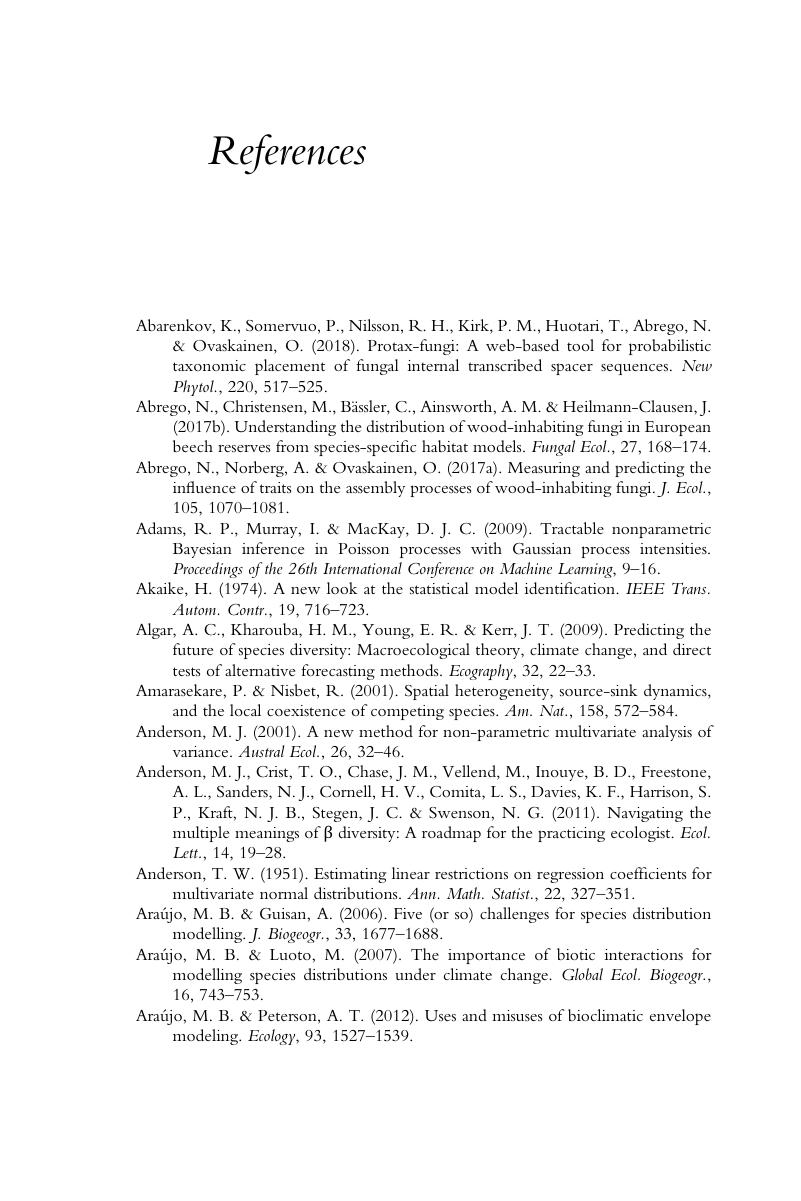Book contents
- Joint Species Distribution Modelling
- Ecology, Biodiversity and Conservation
- Joint Species Distribution Modelling
- Copyright page
- Contents
- Preface
- Acknowledgements
- Part I Introduction to Community Ecology
- Part II Building a Joint Species Distribution Model Step by Step
- Part III Applications and Perspectives
- Epilogue
- References
- Index
- References
References
Published online by Cambridge University Press: 18 May 2020
- Joint Species Distribution Modelling
- Ecology, Biodiversity and Conservation
- Joint Species Distribution Modelling
- Copyright page
- Contents
- Preface
- Acknowledgements
- Part I Introduction to Community Ecology
- Part II Building a Joint Species Distribution Model Step by Step
- Part III Applications and Perspectives
- Epilogue
- References
- Index
- References
Summary

- Type
- Chapter
- Information
- Joint Species Distribution ModellingWith Applications in R, pp. 350 - 368Publisher: Cambridge University PressPrint publication year: 2020



